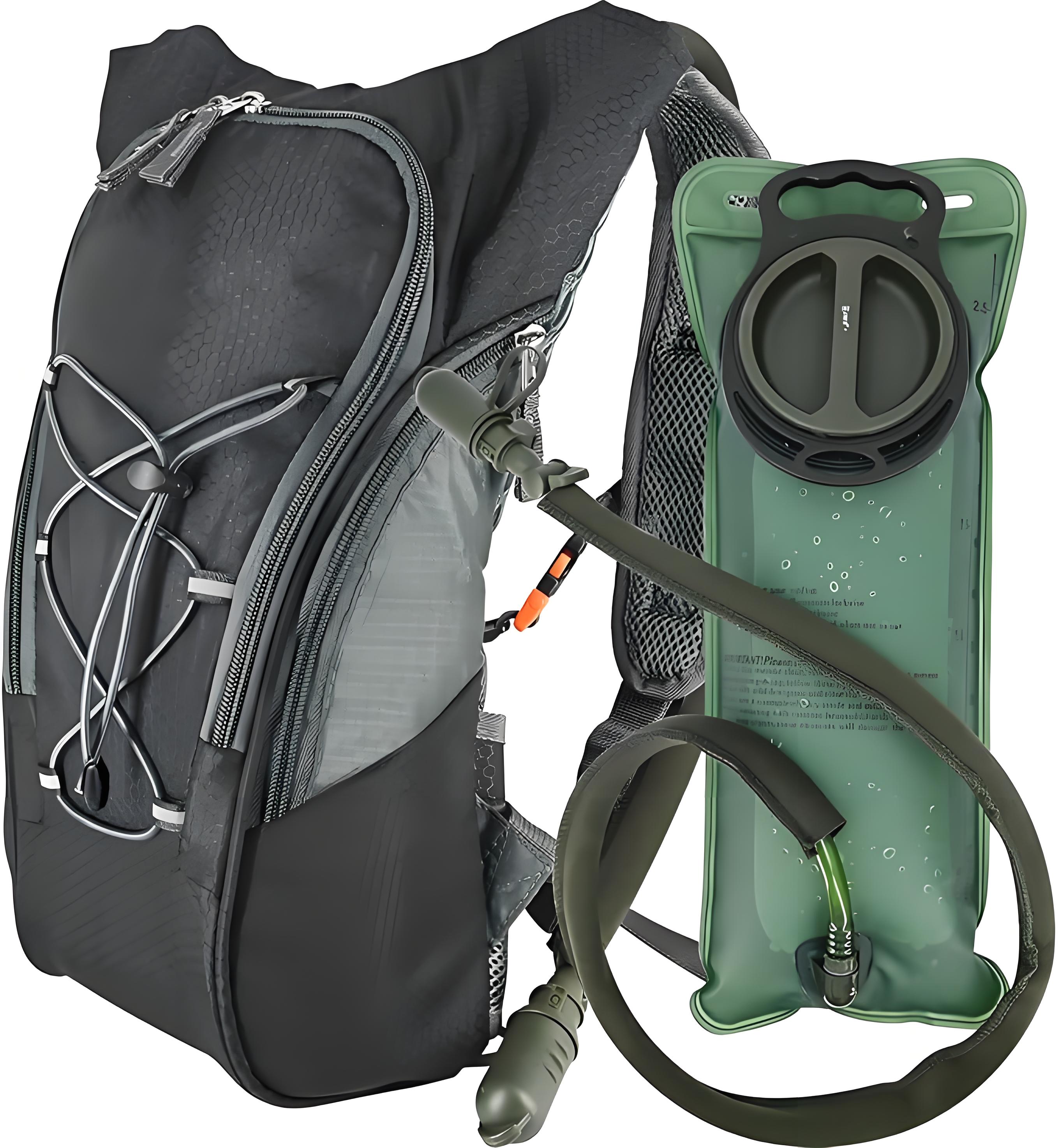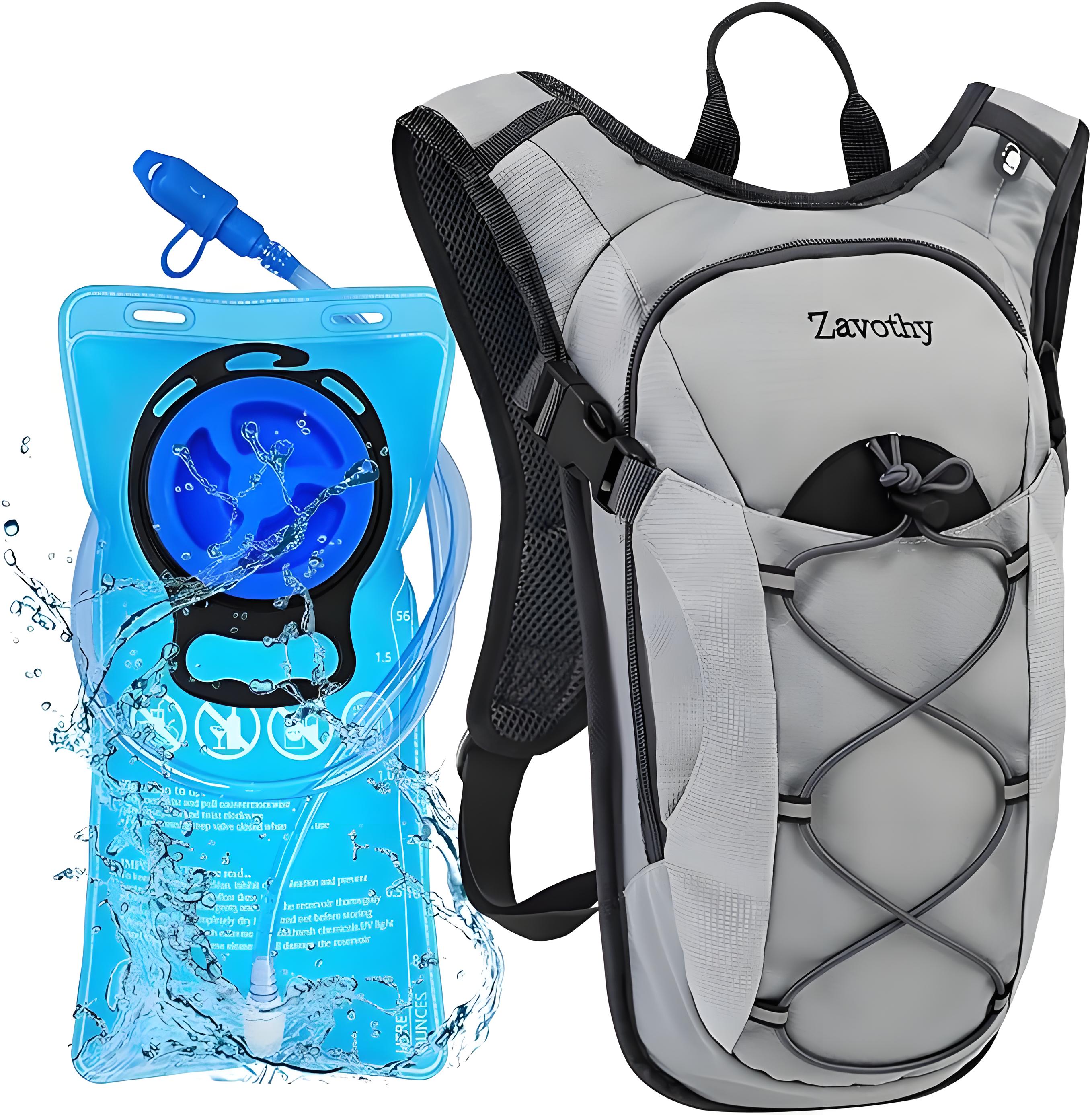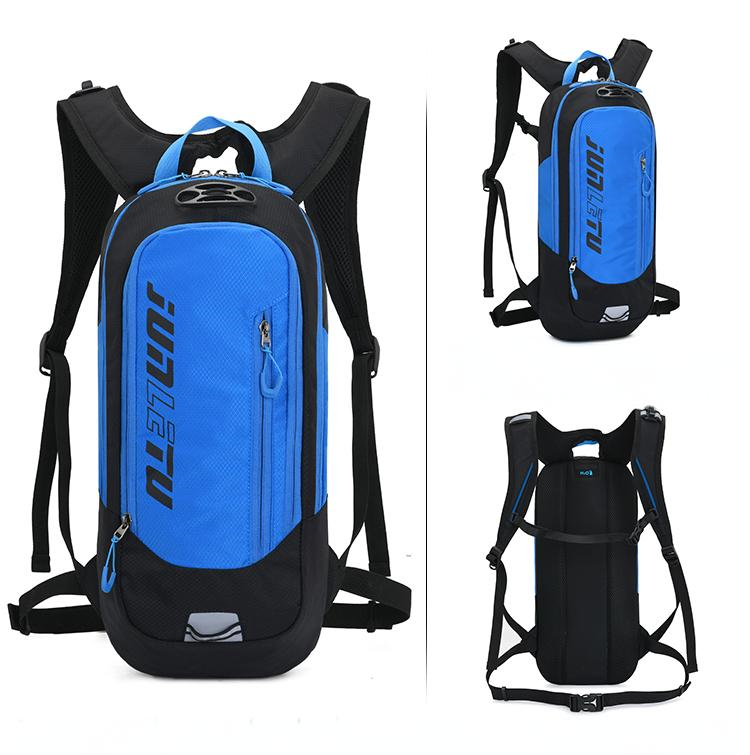As a long-time runner and gear enthusiast who’s logged countless miles on trails and roads, I’ve learned that staying hydrated can make or break a run. The question of whether a hydration backpack is a must-have for running enthusiasts pops up often, especially among those tackling longer distances or exploring new terrains. It’s a decision that involves weighing convenience, comfort, and practicality against your running style and goals. In this article, I’ll share my insights, drawn from years of running and testing gear, to help you decide if a hydration backpack is worth the investment. From urban joggers to trail ultra-runners, I’ll cover the pros, cons, and scenarios where a hydration backpack shines, ensuring you have the info to make an informed choice.

Why Hydration Matters for Runners
Running pushes your body to its limits, and proper hydration is non-negotiable to maintain performance, prevent fatigue, and avoid health risks like dehydration or heat exhaustion. During a run, you lose water through sweat—sometimes up to 1–2 liters per hour in hot conditions. For short runs, a water bottle might suffice, but for longer distances or intense sessions, carrying enough fluid becomes a challenge. That’s where a hydration backpack comes in, offering hands-free water storage and additional space for essentials.
I remember my first half-marathon in sweltering heat, juggling a handheld bottle that cramped my grip and slowed me down. It was a wake-up call that led me to explore hydration backpacks. Since then, I’ve tested various options on trails, marathons, and casual jogs, learning what works and what doesn’t. Let’s break down whether a hydration backpack is a game-changer for you.
What Is a Hydration Backpack?
A hydration backpack (or hydration vest) is a lightweight pack designed for runners, featuring a reservoir (bladder) for water, a drinking tube for easy sipping, and compartments for gear like snacks, keys, or a phone. Unlike traditional backpacks, they’re streamlined to minimize bounce and distribute weight evenly, ensuring comfort over long distances. Capacities range from 1–2 liters for short runs to 5–12 liters for ultra-marathons, with reservoirs typically holding 1–3 liters of water.
In my early trail running days, I used a 2-liter hydration backpack for a 30K race. It held enough water and gels to keep me fueled without stopping, proving its value in demanding scenarios. But is it necessary for every runner? Let’s explore the benefits and drawbacks.
Benefits of a Hydration Backpack for Runners
Hydration backpacks offer several advantages that can enhance your running experience. Here’s what I’ve found through personal use and conversations with fellow runners:
Hands-Free Hydration: The drinking tube lets you sip water without breaking stride, unlike handheld bottles that require grip adjustments. This was a lifesaver during a 50K trail race where I needed both hands for balance on rocky terrain.
Higher Water Capacity: Reservoirs hold 1–3 liters, ideal for runs exceeding an hour or in areas without water stations. For a desert trail run, my 2-liter reservoir kept me hydrated for 3 hours without refilling.
Storage for Essentials: Pockets for gels, snacks, a phone, or a jacket make hydration backpacks versatile for long runs or remote trails. I’ve stashed rain gear in mine during unpredictable mountain weather.
Comfort for Long Distances: Designed for runners, these packs fit snugly, reducing bounce and chafing. After switching to a well-fitted vest, I noticed less shoulder strain compared to a bulky backpack.
Versatility: Many packs allow you to swap the reservoir for bottles or use them for hiking, making them a multi-purpose investment.

Drawbacks of Hydration Backpacks
No gear is perfect, and hydration backpacks have their downsides. Here’s what I’ve experienced or seen others struggle with:
Weight and Bulk: Even lightweight packs add weight (0.5–1 kg when empty, plus water), which can feel cumbersome for short runs. I once wore a hydration vest for a 5K and found it overkill.
Cost: Quality hydration backpacks range from $50–$150, a steep investment compared to a $10 water bottle. Budget runners may hesitate.
Maintenance: Reservoirs require regular cleaning to prevent mold, which can be tedious. I learned this the hard way when I neglected cleaning and ended up with a funky-tasting bladder.
Fit Issues: A poorly fitted pack can chafe or bounce, causing discomfort. It took me a few tries to find a vest that hugged my torso without slipping.
Learning Curve: Adjusting to sipping from a tube or managing the pack’s weight takes practice, especially for new runners.
Who Needs a Hydration Backpack?
To help you decide, I’ve put together a table summarizing when a hydration backpack is essential, optional, or unnecessary, based on running scenarios:
| Running Scenario | Hydration Needs | Backpack Necessity | Alternative Options |
|---|---|---|---|
| Short Runs (<1 hour, urban) | Low (0.5–1L) | Unnecessary | Handheld bottle, waist belt |
| Long Runs (1–3 hours, road/trail) | Moderate (1–2L) | Optional | Handheld bottle, hydration belt |
| Ultra-Runs (>3 hours, trail) | High (2–3L) | Essential | Limited (few water stations) |
| Hot Weather/Remote Areas | High (1–3L) | Highly Recommended | None (no water access) |
1. Short Runs (Under 1 Hour, Urban)
For casual jogs or city runs with access to water fountains, a hydration backpack is usually overkill. I stick to a handheld bottle for my 5K evening runs—it’s light and sufficient. A hydration belt with small bottles is another sleek alternative.
2. Long Runs (1–3 Hours, Road or Trail)
For marathon training or moderate trail runs, a hydration backpack becomes optional. If water stations are available (e.g., during a road marathon), a bottle or belt might suffice. However, I prefer a 1.5-liter hydration vest for 2-hour trail runs, as it frees my hands and carries snacks.
3. Ultra-Marathons or Remote Trails (>3 Hours)
For ultra-runners or those tackling remote trails, a hydration backpack is a must. During a 50K mountain race, my 2-liter reservoir and extra storage for gels and a headlamp were critical, as water stops were 10K apart. Without it, I’d have been dehydrated and underprepared.
4. Hot Weather or Remote Areas
In hot climates or areas without water access, a hydration backpack ensures you carry enough fluid. I’ve run in 35°C desert conditions where my 2-liter pack was a lifesaver, preventing heat exhaustion.

How to Choose the Right Hydration Backpack
If you decide a hydration backpack is for you, here’s how I recommend picking one based on years of testing:
Capacity: Choose a reservoir size (1–3 liters) based on run length and climate. For most runners, 1.5–2 liters is versatile. I use a 1.5-liter pack for 2-hour runs and a 3-liter one for ultras.
Fit and Comfort: Look for adjustable straps and a snug fit to prevent bouncing. Women-specific designs or smaller sizes work better for petite runners. I once tried a pack that was too large, and it chafed my shoulders—proper sizing is key.
Material and Breathability: Opt for lightweight, breathable fabrics to reduce sweating. Mesh panels helped me stay cool during a summer trail run.
Storage Features: Ensure enough pockets for essentials like gels, a phone, or a jacket. I prefer vests with front pockets for quick access to snacks.
Ease of Use: A user-friendly drinking tube and quick-fill reservoir save time. I’ve fumbled with tricky bladders mid-run, so test the system before buying.
Durability: Choose a pack with reinforced stitching for long-term use. My first cheap pack tore after a few months, but a higher-quality one has lasted years.
Practical Tips for Using a Hydration Backpack
To get the most out of your hydration backpack, here are tips I’ve picked up:
Practice Before Race Day: Wear the pack on training runs to adjust to its weight and sipping mechanism. I made the mistake of using a new pack for a race and struggled with the tube.
Clean the Reservoir Regularly: Rinse the bladder after each use and dry thoroughly to prevent mold. I soak mine in a baking soda solution monthly.
Balance the Load: Distribute weight evenly (e.g., place heavy items like a phone low in the pack) to avoid strain. This saved my back during a 6-hour trail run.
Test Hydration Needs: Calculate your sweat rate (weigh yourself before and after a run) to determine how much water you need. I found I lose about 1 liter per hour in hot weather.
Layer Properly: Wear the pack over a fitted shirt to reduce chafing, and apply anti-chafing cream for long runs.
Alternatives to Hydration Backpacks
If a hydration backpack feels like too much, consider these alternatives:
Handheld Bottles: Lightweight (0.5–1 liter), ideal for short runs. I use one for 10K road runs but find it tiring for longer distances.
Hydration Belts: Waist belts with 0.5–1.5 liters of water are less bulky than backpacks. They’re great for 1–2 hour runs but lack storage for ultra-runs.
Collapsible Flasks: Soft flasks (0.25–0.5 liters) fit in pockets or vests, offering flexibility. I carry two for moderate trail runs when I don’t need a full pack.
Water Stations: For road races with frequent aid stations, you may not need to carry water. I relied on stations during a city marathon, skipping the pack entirely.
My Personal Experience: When a Hydration Backpack Made a Difference
During a 42K trail marathon in humid conditions, my hydration backpack was a game-changer. The 2-liter reservoir kept me hydrated between sparse water stations, and the vest’s pockets held enough gels and a lightweight jacket for evening chill. Without it, I’d have struggled to finish. Conversely, for my daily 8K urban runs, I stick to a handheld bottle—it’s simpler and less bulky. These experiences taught me that the necessity of a hydration backpack depends heavily on the run’s demands.
Cost vs. Value: Is It Worth the Investment?
Hydration backpacks aren’t cheap, with quality models costing $50–$150. For casual runners doing short, urban runs, the cost may not justify the benefits— a $10–$20 bottle or belt works fine. But for trail runners, ultra-marathoners, or those in hot climates, the investment pays off in comfort and safety. I spent $80 on a reliable hydration vest five years ago, and it’s still going strong, saving me from dehydration on countless runs.

Conclusion: To Buy or Not to Buy?
Whether a hydration backpack is necessary depends on your running habits, environment, and goals. If you’re sticking to short, urban runs with water access, a handheld bottle or belt is enough. But for long-distance runners, trail enthusiasts, or those in hot or remote areas, a hydration backpack offers unmatched convenience, capacity, and comfort. My years of running have shown me that the right gear can transform your experience, and a well-chosen hydration backpack can be a loyal companion on challenging runs.
I hope this guide helps you decide if a hydration backpack is right for you. If you’re still unsure or want advice on specific models or running scenarios, feel free to ask—I’m happy to share more insights from my running journey!
Frequently Asked Questions
Q1: How do I know what size hydration backpack to get?
A: Choose based on run length and water needs. A 1–2 liter reservoir suits 1–3 hour runs, while 2–3 liters is better for ultras. Ensure the pack fits snugly—try it on or check sizing charts.
Q2: Are hydration backpacks uncomfortable for long runs?
A: A well-fitted pack with adjustable straps and breathable materials should feel comfortable. Test it on shorter runs first to adjust fit and avoid chafing.
Q3: Can I use a regular backpack instead of a hydration backpack?
A: Regular backpacks are heavier and bounce more, causing discomfort. Hydration backpacks are designed for running with snug fits and lightweight materials.
Q4: How do I clean a hydration backpack’s reservoir?
A: Rinse with warm water and mild soap after each use, and dry thoroughly. For deep cleaning, use a baking soda solution (1 tsp per liter) and a cleaning brush monthly.